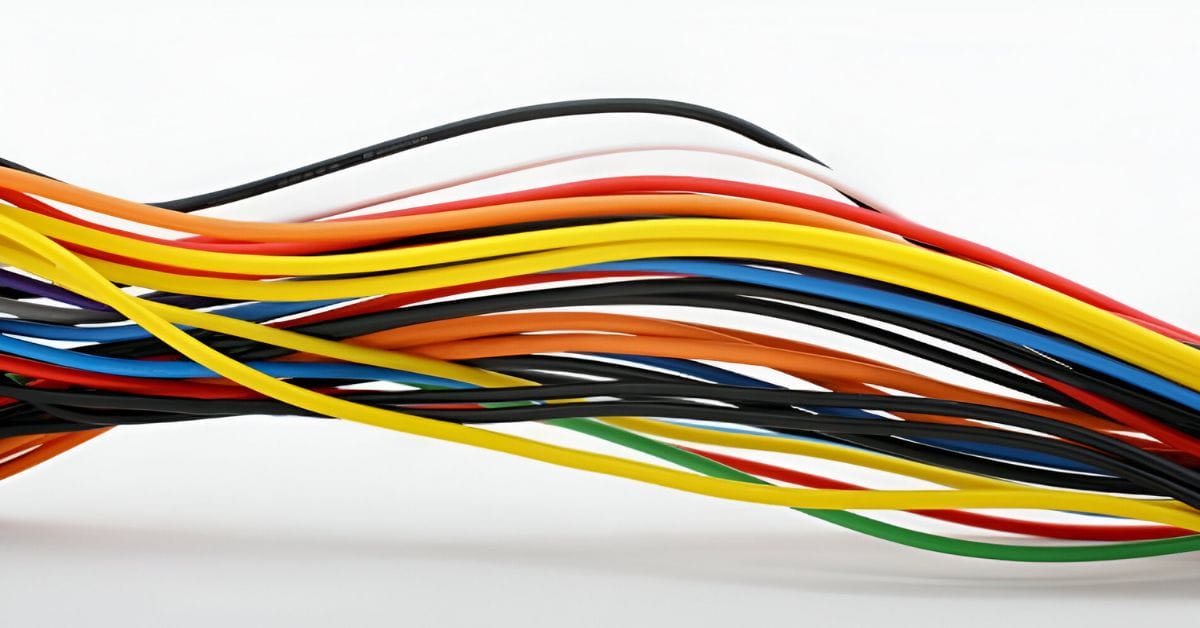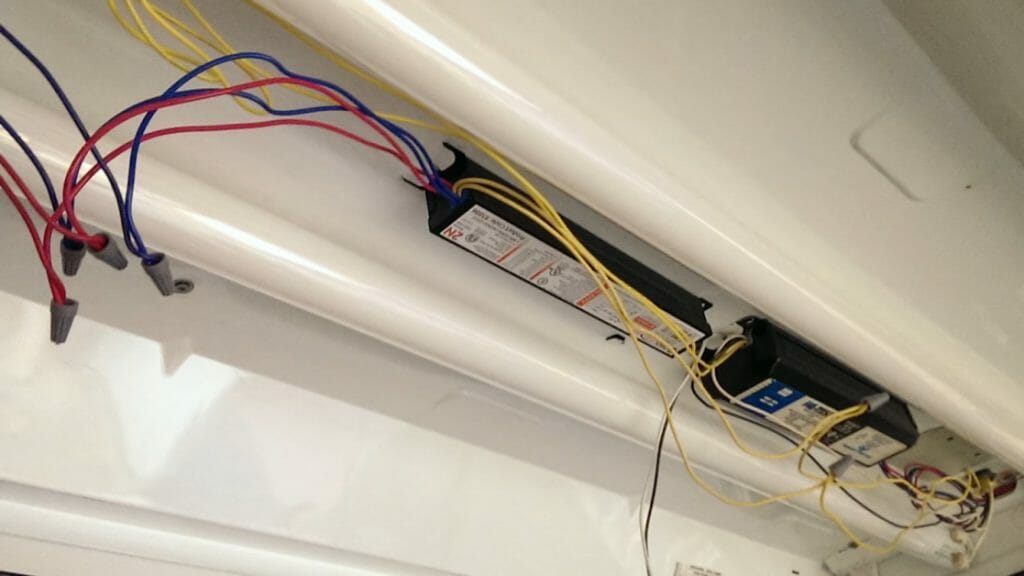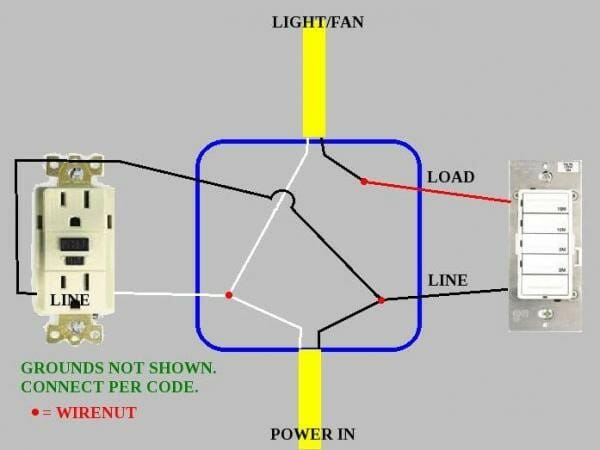What Color is Load Wire? (Explained)

Load wires (downstream or outgoing) are connected to the top half of the switch box. Load wires connect the switch to a load or loads in an electrical circuit such as a bulb. The line and load wires are critical components in a circuit. Most people cannot tell these wires apart.
Conventionally, load wires are black or red. They are located on the top part of a switch. To identify a load or downstream wire, trace the black wire on your switch. These wires deliver power to a device from a source.
How can you tell apart a load wire in a circuit? In this guide, I will provide tips to help you quickly identify a load wire in your electrical light fixture or any other electrical device. It is imperative to know the color codes of electrical wire.
Understanding Wire Color Codes

Let’s get into the nitty-gritty of electrical wiring, especially focusing on those all-important color codes and what they mean in the real world of fixing and creating spaces that look great, safe, and up to code.
While working on various projects, I’ve come to appreciate the significance of following the National Electrical Code (NEC). This code is like the bible for electrical installations – knowing it inside out is essential.
- In the U.S., black and red wires are your typical load or hot wires for standard single-phase wiring. These are the guys that carry the power to your outlets and fixtures. They’re the lifeblood of the electrical system.
But here’s a thing I learned the hard way: never assume a wire is not live. I remember this one time when I was working on a remodel. We thought the circuit was dead, but lo and behold, that wasn’t the case. A good reminder to always double-check!
- Neutral wires, typically white or gray, play a crucial role too. They complete the circuit, bringing the current back after it’s done its job in your appliance or light fixture. I’ve seen my fair share of circuit issues, and more often than not, it’s a neutral wire that’s not properly connected.
- And then there’s the grounding wire, usually green or bare copper. These guys are your safety net. They take any fault current straight to the ground, keeping you safe from electrical shocks. I’ve seen older homes without proper grounding; let me tell you, it’s an upgrade you don’t want to skip.
So, whether you’re installing a new light fixture, rewiring an old house, or just trying to figure out why that outlet isn’t working, knowing your wire colors and what they mean according to the NEC can make all the difference. Stay safe, and happy wiring!
Load and Line Wires: What is the Difference?

While working with electrical setups, I’ve had to make sure I’m crystal clear on the difference between load and line wires. It’s key to getting your wiring right and keeping things safe.
Load wires are the ones that connect your light switch to your light fixture. Think of them as the delivery guys, bringing the power to where it needs to go. When you flip that switch, boom, the load wires spring into action, lighting up your space.
Now, line wires, they’re a different story. These wires bring power into the switch from your electrical panel. They’re the starting point of your circuit, bringing the power to the party.
One thing I’ve learned is that it’s not just about colors. Sure, load wires are often black or red, but the real trick is in their placement. Load wires are typically found at the top of the switch. They’re waiting there, ready to take the power out to your lights. On the other hand, line wires hang out deeper in the switch, about halfway inside.
So, always take a moment to understand which wire is which. It’s not just about making things work; it’s about making them safe. Remember, electricity is no joke; getting your wires crossed can lead to trouble.
Troubleshooting Electrical Wiring: Common Problems and Solutions
Let’s lay out a handy table for troubleshooting common electrical issues that might crop up due to mix-ups with load and line wires.
This table will outline the problem, its likely cause, and how to fix it, keeping it clear and straight to the point:
| Common Problem | Likely Cause | How to Troubleshoot |
|---|---|---|
| Flickering Lights | Loose or incorrect wiring at the switch | Check the switch box. Ensure that the load wire is properly connected to the top half of the switch. |
| Non-functional Outlets | Reversed line and load wires | Identify and correctly attach the load wire (usually black or red) to the top of the switch. |
| Tripping Circuit Breaker | Overloaded circuit due to miswiring | Inspect the wiring. Ensure the line and load wires are in the correct places to avoid overloading. |
| Partial Outage | The load wire is not securely connected | Recheck the connections at the switch. Secure the load wire firmly to ensure a stable connection. |
| Buzzing Sound from Switch | Faulty switch or incorrect wiring | Replace the switch if faulty. Otherwise, rewire correctly, ensuring the load wire is at the top of the switch. |
Remember, electricity is no joke. If you’re unsure or uncomfortable with this, it’s always best to call a professional electrician. Stay safe, and always turn off the power at the breaker before working on any electrical fixtures.
Frequently Asked Questions
- Is It Possible for a Load Wire to Be White or Green?
- Typically, no. White is usually reserved for neutral wires, and green (or bare copper) is used for grounding wires. However, in very specific wiring configurations, like switch loops, a white wire may be repurposed as a load wire but should be marked with black or red tape or paint to indicate its new function.
- How Do I Identify the Load Wire in a Three-Way Switch?
- In a three-way switch setup, identifying the load wire can be trickier. It’s generally one of the colored (non-white, non-green) wires, but its exact position can vary. Consulting the wiring diagram of the switch or using a multimeter to test the wires is often necessary.
- Does the Color of the Load Wire Change in Commercial or Industrial Wiring?
- Commercial and industrial wiring can follow different standards, and the color coding might vary. It’s crucial to refer to the specific electrical codes or diagrams for these settings or consult a professional electrician.
- What Should I Do If I Can’t Identify the Load Wire by Color?
- If you’re unsure, the safest approach is to use a multimeter to test the wires and determine which is the load wire. When dealing with electrical wiring, it’s best to consult a licensed electrician to avoid any risks if you’re ever in doubt.
References
Organizations:
- National Electrical Code (NEC). https://www.esfi.org/workplace-safety/industry-codes-regulations/the-national-electrical-code-nec/
- International Electrotechnical Commission (IEC). https://www.iec.ch/homepage
Website Resources:
- BRADY. http://www.bradyid.com/
- Family Handyman. http://www.familyhandyman.com/
- Engineering’s Advice. http://engineeringsadvice.com/
